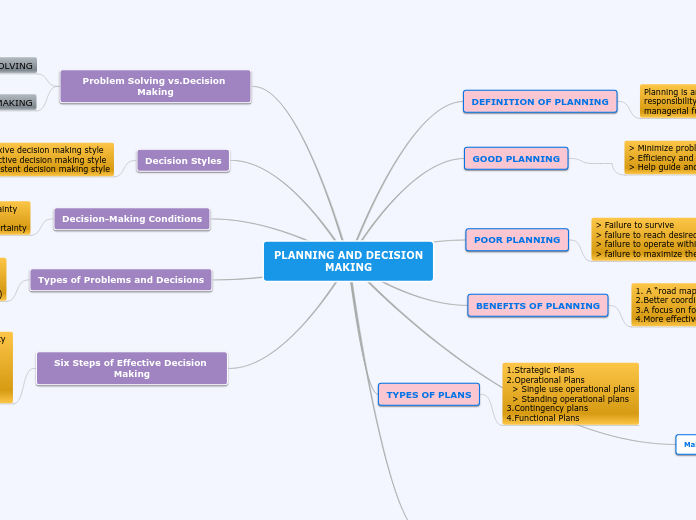af najwa yaakub 5 år siden
275
PLANNING AND DECISIONMAKING
Planning is a fundamental aspect of management, providing a roadmap and enhancing coordination, forward-thinking, and control mechanisms. Different types of plans include strategic, operational, contingency, and functional plans, each serving a unique purpose.









